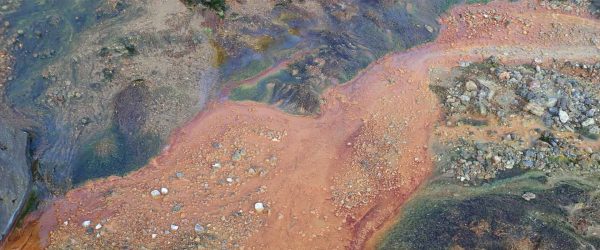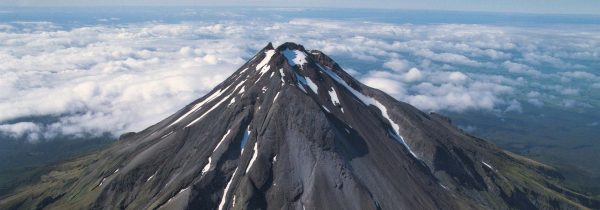Volcanic Resilience
He Manawaroa i ngā Ahi Tipua
Vision
Improved volcanic hazard and impact knowledge is interwoven with mātauranga Māori and informs effective emergency management and monitoring, and ongoing volcanic co-governance arrangements that build kaitiakitanga.
Project description
The Volcanoes programme is creating reliable forecasts of the hazards and impacts of volcanic activity in Aotearoa New Zealand. This new capability must be effectively integrated into existing emergency management institutions and infrastructure to build effective volcanic resilience and mitigation solutions. These solutions need to incorporate mātauranga Māori to recognise the deep cultural connection Māori have with our volcanoes and their role as landowners and custodians of much of Aotearoa New Zealand’s active volcanic areas.
To achieve this, we are working closely with GeoNet, Volcano Advisory Groups, iwi and hapū and local government to:
- Test the forecasting tools developed by the Volcanoes programme with Volcano Advisory groups, as required for emergency management scenario development.
- Integrate the new forecasting tools into core emergency management processes.
- Investigate the existing and potential Māori volcanic co-governance arrangements under a resilience lens.
- Focus on exploring and implementing Māori-led innovation to direct and ground our research.
- Share the benefits of co-governance arrangements and geo-heritage initiatives that inform decision-making with indigenous cultures internationally.
Our goal is for the volcanic hazard assessment capabilities and forecasting techniques developed in the Volcanoes programme to inform land-use planning, economic development, lifelines operation, emergency and evacuation planning. A key focus of our research is that it recognises and builds mātauranga Māori and kaitiakitanga.
Wawata
E tūhonohono ana te mōhiohio pai ake mō ngā mōrearea me ngā pāpātanga puia me te mātauranga Māori, e ārahi ana hoki i te whakahaere me te aroturuki ohotata whaihua, me ngā whakaritenga whakahaere-ngātahi i ngā puia e whakawhanake ana i te kaitiakitanga.
Whakaahuatanga papatono
Kei te waihanga te kaupapa Puia i ngā matapae horopū mō ngā mōrearea me ngā pāpātanga o te ahi tipua i Aotearoa. Me whaihua te whakakotahi i tēnei āheinga ki ngā tōpūtanga whakahaere ohotata onāianei me te tūāhanga hei whakapakari i te manawaroa whaihua o ngā ahi tipua me te otinga whakamauru. Me whakauruuru ēnei otinga i te mātauranga Māori kia kite ai i te tino hononga o te ahurea Māori ki ō tātou puia me tā rātou mahi hei kaipupuri whenua, kaitiaki hoki o ngā wāhi ahi tipua maha i Aotearoa.
Hei whakatutuki i tēnei, kei te mahi tahi mātou me Te Pūao, ngā Rōpū Tohutohu Puia, ngā iwi, ngā hapū me te kāwanatanga ā-rohe ki te:
- Whakamātau i ngā rauemi matapae i whakawhanakehia e te Kaupapa Ngā Puia me ngā rōpū Tohutohu Puia, e ai ki ngā herenga mō te whakawhanake i ngā tūāhua whakahaere ohotata
- Whakakotahi i ngā rauemi matapae hou ki ngā tukanga matua mō te whakahaere ohotata.
- Mātai i ngā whakaritenga mana urungi-ngātahi Māori mō ngā puia onāianei, o anamata hoki, i raro i te tirohanga manawaroa.
- Aro ki te tūhura me te whakatinana i ngā aronga hou Māori hei tohutohu, hei pūtake hoki mō ā mātou rangahau.
- Tuari i ngā hua o ngā whakaritenga mana urungi-ngātahi me ngā Kaupapa aronuku- motuhake e ārahi ana i ngā whakataunga me ngā iwi taketake puta noa i te ao.
Ko tō mātou whāinga, mā ngā āheinga arotake mōrearea puia me ngā tikanga matapae i whakawhanakehia i roto i te kaupapa Ahi Tipua e ārahi i te whakamahere, te whakamahinga-whenua, te whakawhanaketanga ōhanga, ngā whakahaerenga o ngā rōpū whakamarumaru, te whakamahere ohotata me ngā tikanga whakawātea hoki. Ko tētahi aronga matua o tā mātou rangahau ko te whakamana me te whakapakari i te mātauranga Māori me te kaitiakitanga.
Resource Outputs from this project
Geoheritage and geodiversity elements of the SW Pacific: A conceptual framework
Interaction with volcanism has formed the basis of many traditional cultural practices that remain part of everyday life and enforce community resilience in the SW Pacific.
From anecdotes to quantification: advances in characterizing volcanic eruption impacts on the built environment
Deligne, N.I., Jenkins, S.F., Meredith, E.S., Williams, G.T., Leonard, G.S., Stewart, C., Wilson, T.M., Bias, S., Blake, D.M., Blong, R.J., Bonnadonna, C., Barraza, R.C., Hayes,…
Reflections from an Indigenous Community on Volcanic Event Management, Communications and Resilience.
Gabrielsen H, Procter J, Rainforth H, Black T, Harmsworth G, Pardo N. 2018. Reflections from an indigenous community on volcanic event management, communications and resilience.…
Volcanic hazard map visualisation affects cognition and crisis decision-making
Mary Anne Thompson Clive, Jan Marie Lindsay, Graham Sloane Leonard, Christof Lutteroth, Ann Bostrom, Paul Corballis, Volcanic hazard map visualisation affects cognition and crisis decision-making,…

